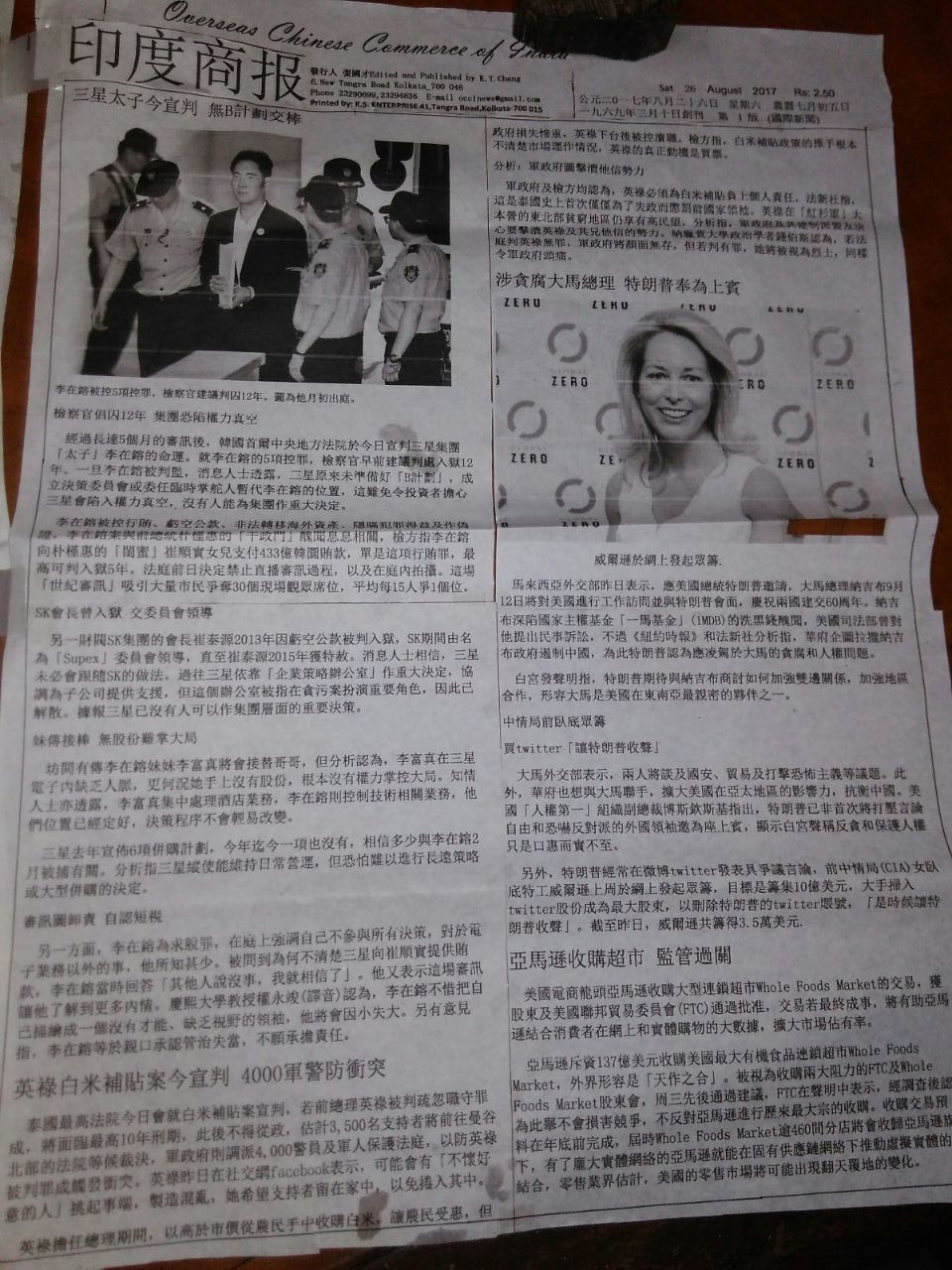In a tiny corner of New Tangra Road in Kolkata’s east, a septuagenarian and his colleague are fighting a fierce, but quiet battle every day to do their bit in trying to keep the Chinese language and tradition alive in India.
There’s a dank hall of the Chinese Tannery Association, where, amidst bunches of old brittle newspaper sheets, you’ll find the office of the Overseas Chinese Commerce of India or Seong Pow.
The first recorded Chinese settler in India is Tong Achew, a trader who came to Budge Budge around 1780. But it was in 1935 that the first Chinese newspaper, The Chinese Journal of India, was published in India.
Seong Pow came much later. Lee Youn Chin, a community leader, first started publishing it, the first edition was out on March 10, 1969. It was a newspaper focused on business-related news, but over the years, though the content has undergone enormous changes, Seong Pow has come to mean a matter of pride for Kolkata’s Chinese community.
The workplace of K.T.Chang, retired tannery worker-turned-editor, has the wonderful musty smell of brittle newspaper copies. Unlike most newspaper offices buzzing with excitement on the latest news, the Seong Pow office is quiet except for the voice of Chang’s assistant, Helen Yang, who speaks almost in whispers.
She asks Chang for suggestions on which news to select for next day’s edition, while scrolling down the online version of various Chinese newspapers.
Chang laments, “We don’t have resources to assign reporters, so we mainly depend on news from China, Taiwan, Macau, Hong Kong and English dailies of Kolkata.” The Chinese community in Kolkata eagerly waits for the latest news from China.
Seong Pow also carries birth, marriage, social events and deaths announcements for those living in Kolkata, mostly around Tangra and Tireta Bazar. Chen Khoi Kui, secretary of South Tangra Chinese Youth Club, a Tangra resident says, “We look out for these announcements. The newspaper is like our social media.” Though Seong Pow is a Mandarin language newspaper, English words like Facebook and Twitter are commonly used!

Earlier, the four-page daily used to be handwritten. Later, a Chinese DTP machine set replaced the handwritten papers for the only Chinese-language daily in India. This also helped publish black and white images in the newspaper.
Earlier, a layer of grainy substance would cover the newspaper due to the poor quality of the printing machine. No one would recommend reading it during breakfast time. In 1997, the newspaper authorities went for a new printing press, and further modernisation came in 2016.
While every attempt was made to upgrade to new technology and the price of the daily increased (currently it is priced at Rs 2.50), circulation has dropped sharply over the years. It dropped from 900 during the 1990s to 190 in 2017. Earlier, copies would be sent out to Delhi, Mumbai but not anymore.
Seong Pow is a Mandarin language newspaper, and not many in the present generation of the Chinese community in Kolkata can read it.
Owner of the popular restaurant, Beijing, Monica Liu, born and brought up in India, who speaks fluent Hindi, says, “English is important to get a job in India. I used to learn Mandarin in a local school, but only for sometime. Later, I was shifted to an English-medium school.”
Nearly 65 per cent of the Chinese community in Kolkata speak Hakka, (spoken in southern China), others speak Cantonese (from Guangzhou and Hong Kong region), and few know Mandarin.
Many have moved to other counties and elsewhere in India in the recent past for better work opportunities. After the Supreme Court directed the shifting of tanneries from Tangra area due to pollution, many found it either difficult to set up new leather units, or didn’t want to continue with the business for other reasons. The young want to move outside India for better work opportunities. Currently, the Chinese population in Kolkata is approximately 2,000, who mostly run leather units or Chinese restaurants, and very few among them can read Mandarin.
Yet, K.T.Chang remains enthusiastic. “Come what may, I will continue to publish my newspaper,” he says.

